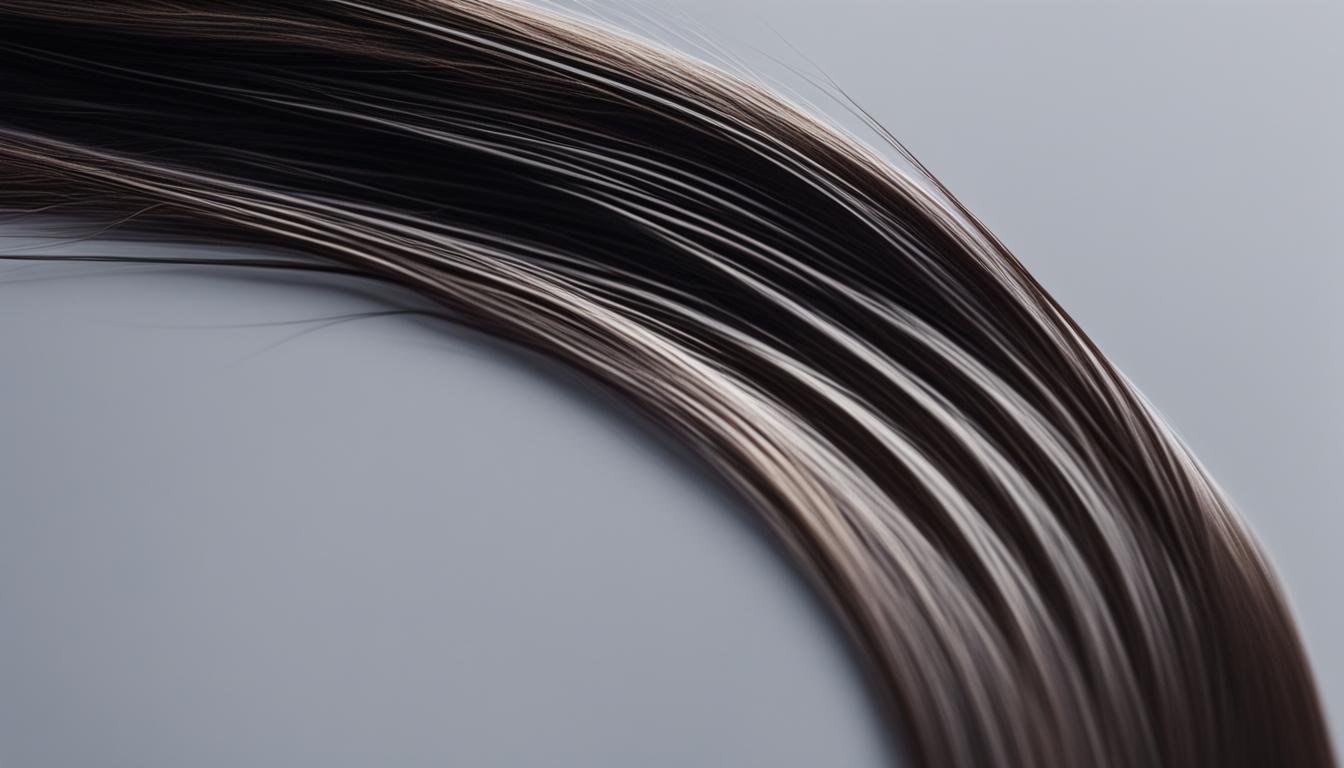Have you ever wondered why some people have hair that effortlessly bounces back, while others struggle with brittle strands that snap easily? The answer lies in hair elasticity, a key factor in determining the health and strength of your hair. Understanding the causes of hair elasticity issues and implementing proper hair care practices can help you prevent and treat common problems such as hair damage and breakage.
What Causes Hair Elasticity?
The elasticity of your hair can be affected by various factors, leading to imbalances in its flexibility and strength. Two primary causes of hair elasticity issues are inadequate moisture levels and damaged proteins. Understanding these causes is essential for implementing effective treatments and prevention strategies.
Inadequate Moisture Levels: When your hair lacks proper hydration, it can become weak and lose its ability to stretch and regain its shape. Factors such as dry environments, excessive washing, and using harsh shampoos can strip away moisture from your hair, leaving it brittle and prone to breakage.
Damage to Proteins: Protein loss is another significant cause of reduced hair elasticity. Excessive heat styling, frequent and vigorous manipulation, chemical treatments like coloring or relaxing, and harsh hair care practices can lead to damaged or broken proteins in the hair shaft. As a result, your hair loses its structural integrity and becomes less elastic.
To illustrate these causes further:
“Hair that is inadequately moisturized lacks the necessary hydration to retain its natural elasticity. This can result in a brittle and fragile state, making it more susceptible to breakage. Similarly, damage to the proteins in the hair shaft, caused by excessive heat, harsh chemicals, or rough handling, can compromise its elasticity, leading to stiffness and reduced bounce.”
Effects of Excess Heat and Manipulation
Excessive heat styling, such as blow-drying, straightening, or using curling irons, can weaken the protein structure of your hair, making it less elastic and more prone to damage. Similarly, rough handling and excessive manipulation, such as aggressive brushing, tight hairstyles, or constant pulling, can strain the hair strands and lead to breakage.
Chemical treatments, such as hair coloring, perming, or relaxing, involve harsh chemicals that can penetrate the hair cuticle and alter its structure. These chemical processes can disrupt the protein bonds in your hair, causing it to become weak, brittle, and less elastic.
| Causes of Hair Elasticity Issues | |
|---|---|
| Excess Heat | – Frequent use of hot styling tools |
| Excess Manipulation | – Aggressive brushing |
| Chemical Treatments | – Hair coloring, perming, relaxing |
By recognizing the causes of hair elasticity issues, you can take proactive steps to prevent further damage and restore the health of your hair. It is essential to adopt proper hair care practices, use products specifically formulated to improve elasticity and strengthen the hair, and minimize exposure to damaging factors such as heat, manipulation, and harsh chemicals.
How to Test Hair Elasticity
To determine the elasticity of your hair, you can perform a simple water test. This test provides valuable insights into your hair’s condition and helps you understand whether it requires protein treatments for high elasticity, moisture treatments for low elasticity, or maintains a balanced elasticity with a proper moisture-protein balance.
- Start by taking a single strand of hair.
- Spray the strand with water to mimic a moist environment.
- Gently pull on the strand and observe how it behaves.
If the hair stretches a lot before breaking, it indicates high elasticity and a need for protein treatments.
If the hair stretches slightly and returns to its original shape, it indicates balanced elasticity with a proper moisture-protein balance.
If the hair does not stretch at all and instantly breaks, it indicates low elasticity and a need for moisture treatments.
By performing this hair elasticity test, you can tailor your hair care routine and treatments to meet your specific needs. Whether your hair requires protein-based products to strengthen and enhance elasticity or moisture-based treatments to restore and maintain elasticity, understanding the elasticity of your hair is essential for promoting healthy, resilient locks.
The Importance of Hair Elasticity
Hair elasticity plays a crucial role in determining the overall strength and resilience of your hair. When your hair has good elasticity, it can withstand various styling techniques, heat, and external factors without experiencing significant damage or breakage. Understanding the significance of hair elasticity allows you to develop a personalized hair care routine that focuses on maintaining the ideal balance of moisture and protein for your specific hair type. Conducting a hair analysis can offer valuable insights into your hair’s individual needs, enabling you to select suitable products and treatments.
Having hair that possesses great strength is essential for maintaining its health and preventing common hair problems. Hair that lacks elasticity is prone to breakage, which can result in thinning hair, split ends, and overall hair damage. By prioritizing hair elasticity, you can enhance the vitality and appearance of your locks.
Benefits of Maintaining Hair Elasticity
1. Resilient and Strong Hair: Hair that exhibits good elasticity is less likely to break or suffer from damage caused by styling tools, excessive manipulation, or chemical treatments. This means your hair can handle everyday stressors and retain its strength and integrity.
2. Enhanced Styling Capabilities: Healthy hair elasticity allows you to experiment with different hairstyles and styling techniques without compromising its integrity. Whether you prefer sleek straight looks or voluminous curls, maintaining hair elasticity ensures your locks can withstand these styling methods without undue strain or damage.
3. Personalized Hair Care Routine: Understanding your hair’s elasticity level enables you to create a hair care routine tailored specifically to its needs. By targeting the moisture and protein balance, you can address any deficiencies and maintain optimal hair health.
4. Effective Product Selection: A hair analysis can provide valuable insights into your hair’s unique characteristics and determine the specific products that will support and strengthen its elasticity. This knowledge allows you to invest in high-quality products formulated to address your hair’s specific needs, leading to improved elasticity and overall hair health.
5. Prevention and Protection: By prioritizing hair elasticity, you can prevent future hair damage and issues. Strong, elastic hair is less prone to breakage, reducing the need for extensive treatments and repairs. This proactive approach helps preserve the integrity and appearance of your hair in the long run.
Tips for Maintaining Hair Elasticity
To ensure your hair maintains its elasticity and strength, consider implementing the following tips:
- Regularly moisturize your hair to prevent dryness and brittleness
- Utilize deep conditioning treatments to nourish and strengthen your hair
- Minimize the use of heat styling tools and use a heat protectant spray when styling
- Trim your hair regularly to remove split ends and promote healthy growth
- Incorporate protein treatments into your hair care routine to support hair strength
By incorporating these practices into your hair routine, you can help maintain and improve hair elasticity, ultimately achieving healthy, lustrous locks.
| Benefits | Actions to Take |
|---|---|
| Resilient and Strong Hair | Regular moisturization, deep conditioning, and minimal heat styling |
| Enhanced Styling Capabilities | Utilize appropriate styling techniques and avoid excessive manipulation |
| Personalized Hair Care Routine | Perform a hair analysis and adjust routine based on the results |
| Effective Product Selection | Invest in quality products designed for your hair type and needs |
| Prevention and Protection | Regular trims, minimal chemical treatments, and proactive care |
How to Restore Hair Elasticity
If you have identified issues with hair elasticity, there are several steps you can take to restore and improve it. Start by using repairing products, such as a hair masque or treatment, to rebuild the damaged proteins in your hair. Additionally, using a heat protectant spray can minimize further damage from styling tools. Maintaining a proper protein-moisture balance in your hair is crucial. Look for products that contain proteins to strengthen your hair and retain moisture to improve elasticity. Reduce heat damage and consider getting regular haircuts to remove damaged ends and promote healthy growth.

Tips for Preventing Hair Elasticity Issues
To maintain healthy and resilient hair, it is crucial to follow a regular hair care routine that focuses on preventing hair elasticity issues. Conditioning your hair after every wash is essential for keeping your hair moisturized and maintaining its elasticity. Make sure to use a conditioner that is suitable for your hair type and focus on applying it to the mid-lengths and ends of your hair.
Incorporating deep conditioning treatments into your routine can help strengthen and nourish your hair. Opt for deep conditioners that contain ingredients like keratin or collagen, which can help rebuild damaged proteins and improve elasticity. Apply the deep conditioner to clean, damp hair and leave it on for the recommended time before rinsing it out thoroughly.
Reducing heat damage is also crucial for maintaining hair elasticity. Whenever possible, use lower heat settings on your styling tools and limit the use of heat on your hair. You can also air-dry your hair instead of using a blow dryer to minimize heat exposure. Applying a heat protectant spray before using any heat styling tools can offer an extra layer of protection.
If you’re looking for a temporary solution to add volume to your hair and protect it from excessive styling, consider using hair extensions. High-quality hair extensions can blend seamlessly with your natural hair and provide added support and protection. Just make sure to choose extensions made from real hair and follow proper maintenance procedures to avoid damage.
